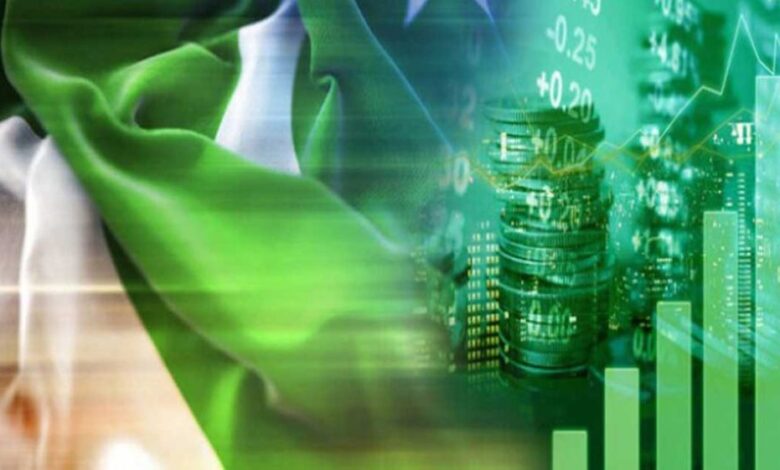Khawaja Basil Sami
Almost the entire world is facing the challenges of soaring inflation and recession. China and Japan have low inflation but are headed for an economic slowdown. Pre-Covid and now high oil, gas and commodity prices as a result of the war in Ukraine are fueling inflation and dampening growth. Energy and food prices contribute 35-45% to overall inflation. Unprecedented floods will worsen the situation in Pakistan.
The rate of inflation is the highest in the last two to three decades in the US and Europe. This is 10.1% in the UK, 8.5% in Germany and 8.6% in the US, with the normal expected inflation rate around 2%. With electricity and gas prices expected to rise by 80% over the coming winter, some economists predict that inflation in the UK will rise by 20% by next year, the level that currently exists in Pakistan.
While the average cost of electricity and gas in the UK is likely to be almost £3,500 over the coming winters, compared to last year’s bills of around £1,250 per household, the new UK Prime Minister has assured the government of helping consumers through tax cuts.
Germany announced a $65 billion and Sweden a $29 billion rescue package for consumers to offset rising energy costs. There have been huge protests in Prague and most governments fear social unrest and strikes. In the UK, rail workers, dock workers, teachers and nurses have called for protests demanding higher pay.
Although gasoline prices have increased, the U.S. is protected from very high electricity prices for now because of its own gas and oil supplies thanks to the ample availability of shale oil. However, inflation at more than 8.6% led to an increase in interest rates to reduce the overheating of the economy. A major recession is looming on the horizon.
In Bangladesh, office and working hours have been shortened to save energy. Large-scale strikes by workers demanding higher wages.
In the case of Pakistan, CPI inflation was 27.3% higher during the month of August 2022 from 12.1% in January 2022. Although core inflation (excluding oil and food prices) is around 18%, there are several reasons for the sharp rise in inflation. The depreciation of the rupee has led to an increase in the incidence of imported inflation. From April to August 2022, the rupee fell by almost 23% against the US dollar.
The local currency is now recovering as the IMF package was reinstated after being derailed last winter. In addition, import compression has improved the current account situation, although the oil bill still accounts for about 26-30% of total imports. Any fall in oil prices, the government has pledged, will be passed on to consumers.
One of the other main reasons for the high level of inflation is the lagged effect of a large budget deficit in the previous year. The budget deficit was up to Rs 6,900 billion or roughly 9% of GDP during the fiscal year ending June 31, 2022, against the 4.2% agreed with the IMF. In addition, the equivalent of $20 billion in debt was contracted over the past four years, compared to $53 billion in 2008-2018. Its cumulative impact meant that more money was chasing fewer goods.

Violation of the IMF agreement to maintain oil prices at world prices further put pressure on the budget deficit, causing prices to rise. In addition, the tax amnesty was granted in violation of IMF commitments.
A recent IMF assessment report particularly mentions these factors causing higher inflation-led growth.
Unprecedented flooding destroyed large areas of rice, cotton and vegetables and caused massive destruction and damage to roads and bridges. As a result, supply-side pressures will further escalate inflation, which may persist into next year. Other countries are also experiencing high inflation. Turkey has an inflation rate of 80%, Iran 50.3% and Egypt 13.6%.
Domestic growth projections of around 3.2% for 2022-23 have been cut to 2.75% by the government, mainly due to devastating monsoon floods.
International aid should strengthen the efforts of the domestic government and non-governmental organizations. BISP cash assistance to the poor would have to be increased. Adding to Pakistan’s economic woes is continued political instability, which will further worsen the economic situation.
In the case of Pakistan, the IMF’s terms require non-payment of oil subsidies without additional equivalent revenue generation. Hence, there is no relief for consumers in this regard, but any reduction in the world price can be passed on to the user.
In the case of gas, due to delays in concluding long-term LNG deals over the past four years, almost all gas available on the world market has been pre-booked by Europe, Japan, China and India until this coming winter. Almost no gas is available on the world market. Spot prices are as high as $40 per MMBTU. The 16-year deal struck with Qatar in 2016, for which a former prime minister and finance minister were sent to prison on charges of proven irregularities, is worth around US$13 per MMBTU.
In the short term, there seems to be no immediate respite in sight. Government assistance where possible can lessen the severity of the impact.
Just hoping that oil, gas and food prices can come down in a year or two because of some progress to resolve the Ukraine conflict can reduce inflation and lead to an economic recovery. A robust recovery looks like a long shot.
In our case, the revival of the IMF package and the improvement of the external environment should stop the fall of the rupee, leading to a reduction in imported inflation. However, floods and political uncertainty will keep the situation unpredictable. However, in the long term, only fundamental structural reforms can move the economy onto the path of sustainable growth, poverty alleviation and social welfare.

— The writer is an A Levels Student at Aitchison College and has a passion for writing since childhood. Mr Sami does poetry and article writing.
The views expressed in this article are those of the author and do not necessarily reflect the official policy or position of Lahore Mirror

